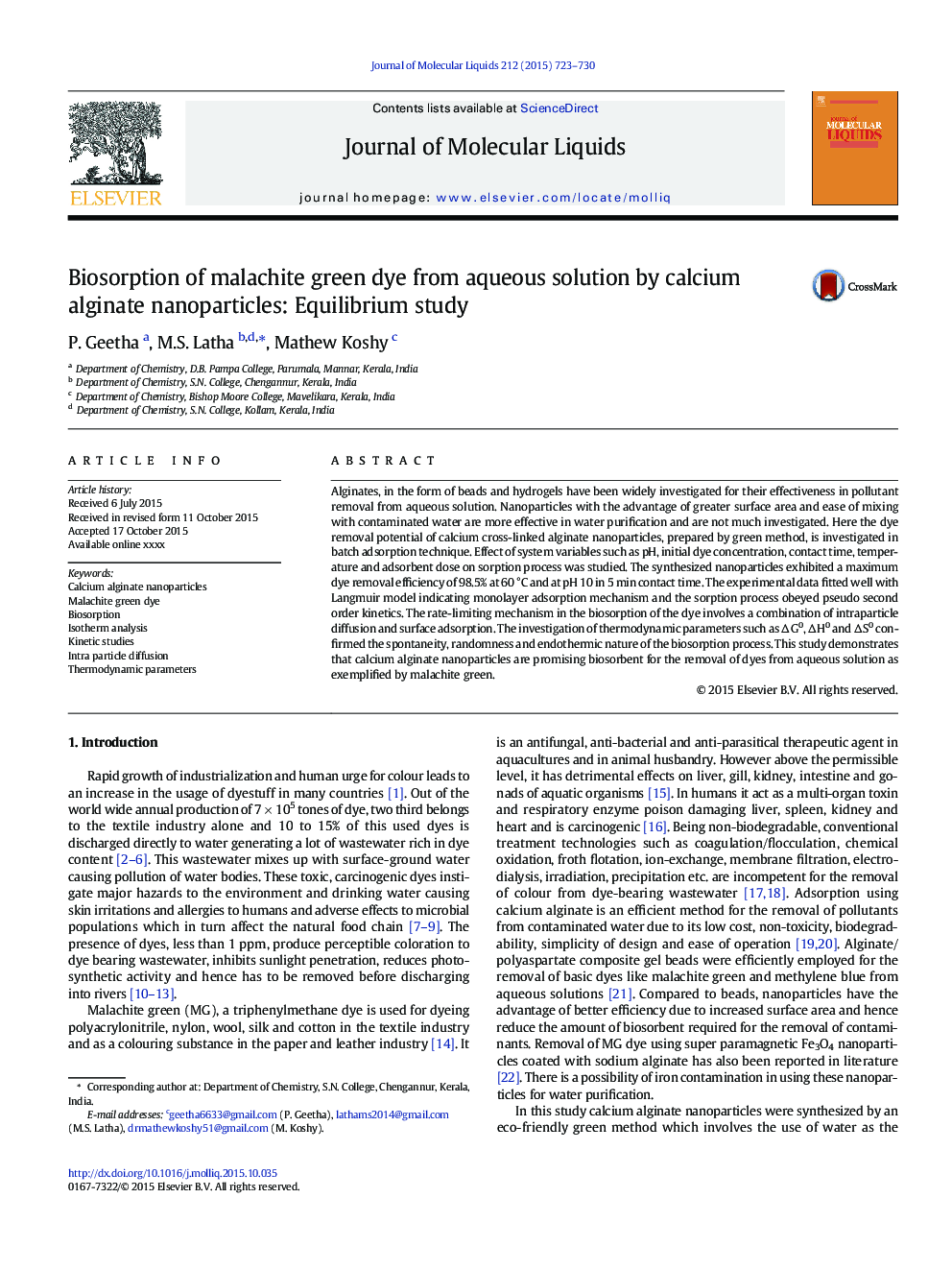| Article ID | Journal | Published Year | Pages | File Type |
|---|---|---|---|---|
| 5410582 | Journal of Molecular Liquids | 2015 | 8 Pages |
Abstract
Alginates, in the form of beads and hydrogels have been widely investigated for their effectiveness in pollutant removal from aqueous solution. Nanoparticles with the advantage of greater surface area and ease of mixing with contaminated water are more effective in water purification and are not much investigated. Here the dye removal potential of calcium cross-linked alginate nanoparticles, prepared by green method, is investigated in batch adsorption technique. Effect of system variables such as pH, initial dye concentration, contact time, temperature and adsorbent dose on sorption process was studied. The synthesized nanoparticles exhibited a maximum dye removal efficiency of 98.5% at 60 °C and at pH 10 in 5 min contact time. The experimental data fitted well with Langmuir model indicating monolayer adsorption mechanism and the sorption process obeyed pseudo second order kinetics. The rate-limiting mechanism in the biosorption of the dye involves a combination of intraparticle diffusion and surface adsorption. The investigation of thermodynamic parameters such as â G0, â H0 and â S0 confirmed the spontaneity, randomness and endothermic nature of the biosorption process. This study demonstrates that calcium alginate nanoparticles are promising biosorbent for the removal of dyes from aqueous solution as exemplified by malachite green.
Related Topics
Physical Sciences and Engineering
Chemistry
Physical and Theoretical Chemistry
Authors
P. Geetha, M.S. Latha, Mathew Koshy,
